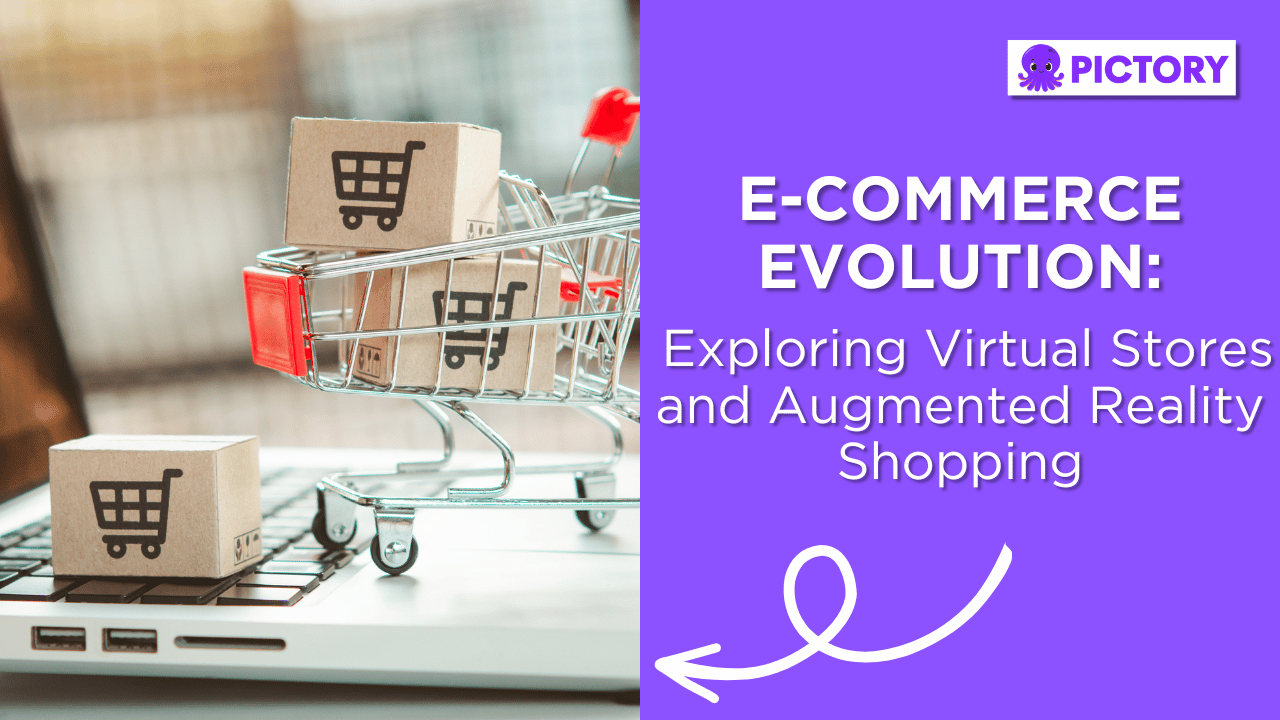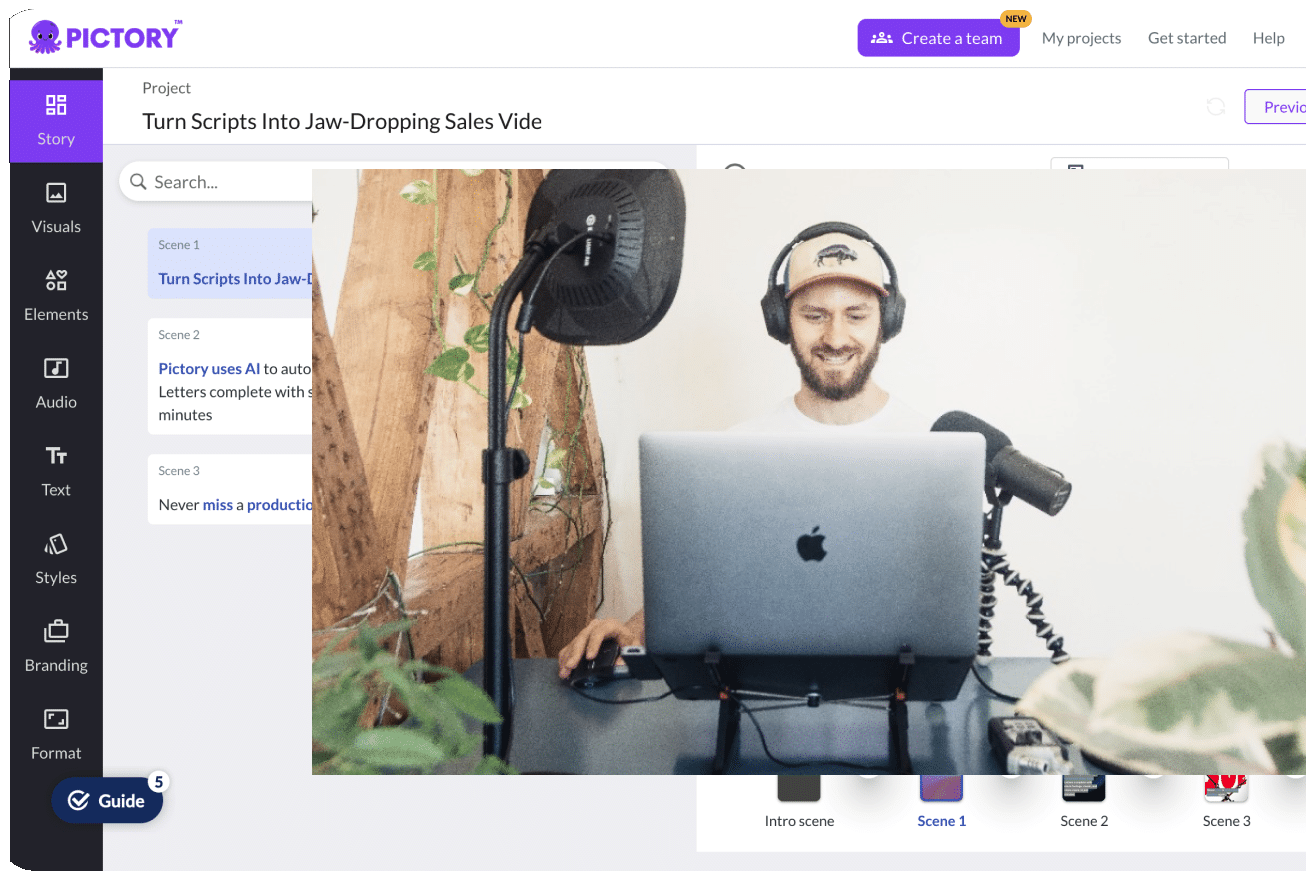Virtual shopping and augmented reality may sound like science fiction, but you’ve probably interacted with some form of RV and AR technology already without even realizing it.
Some of the biggest brands in the world are using it to change and expand the concept of what an online store can be.
In this piece, we’ll go through everything from recent online shopping trends to the ways in which AR and VR technology is helping boost things like customer engagement.
We’ll also dig into how this advanced technology operates and real-world examples to give an even better understanding of the potential it offers.
Any business wanting to offer customers more interesting online or even in-store experiences, and build their brand profile in the process, can certainly get great inspiration from the world of AR and VR.
Online Shopping Trends 2023
About 58% of all consumer spending is now done online and that figure is expected to jump to 64% in the next 10 years.
As popular as online shopping is though, the challenge that many retailers have grappled with is trying to combine the convenience of internet purchases with the perks and immersive experiences that a physical store can bring.
VR and AR technology is helping to bridge that gap and it seems customers are more than willing to come along for the journey.
In a 2022 survey from McKinsey & Company, nearly half of the respondents said they’d be interested in using “metaverse technology” such as VR and AR in their shopping habits.
Only about 1% of retailers are currently using AR technology, but the trend is growing and every day more brands are finding new ways to apply it and improve the online shopping experience.
What is Virtual Reality (VR) and Augmented Reality (AR) Technology?
Virtual reality (VR) and augmented reality (AR) both use digital interventions to change our perceptions of reality but to different degrees.
AR, as its name suggests, provides people with an augmented reality in which some kind of virtual element comes in and adds to the user’s reality.
One of the most common examples that most smartphone users will know is an AR filter.
First popularized by Snapchat with funny dog ears and the like, these filters have gone on to include branded versions that allow Instagram users to, for example, try on Valentino’s famous runway makeup.
It takes your reality (the image of your face) and overlays it with something digital, hence the concept of augmented reality.
VR, on the other hand, doesn’t just augment but provides a totally immersive virtual reality.
Most people know of VR from VR headsets like the ones from Meta or even Apple’s latest offering, the Apple Vision Pro.
How these VR headsets work is that they block out your surroundings and make it seem as if you’re somewhere else entirely.
The 360-degree video they provide gives the sensation of replacing reality with virtual worlds instead.
How Can AR and VR Technology Change Shopping?
Though often marketed for gaming, VR and AR technology holds major value for retailers, especially those online.
Done well, it can change how customers shop and have a significant impact on aspects such as brand loyalty and conversion rates.
Let’s take a closer look (unfortunately, no VR headsets for this though):
Better Product Visualizations with VR
A challenge that all e-commerce retailers grapple with is that of allowing customers a chance to imagine themselves wearing or using an item, even when they don’t have the chance to see or touch physical products in-store.
AR and VR technology is one of the best ways to change this aspect of the online shopping experience.
Even a simple AR filter allows customers to “try” a product on, allowing for better overall product visualization and more informed purchasing decisions.
Online stores that use VR take this a step further by allowing customers to interact with products and see them to scale, all from the comfort of their own homes.
Virtual Try-Ons and Color Matching

Virtual try-on experiences are one of the most popular uses of AR and VR.
An augmented reality approach tends to use, as mentioned, some kind of camera filter that overlays a product onto a real image of a customer.
Beauty brands in particular have hopped onto this trend, using it to provide customers with a chance to try out lipstick shades and foundations.
AR clothing try-on isn’t as common, but Google recently released a new AI shopping feature that facilitates a virtual try-on so that shoppers can see an item on a range of bodies and skin tones.
Try-on technology like this makes online products feel more accessible to customers and means that they’re more likely to purchase the correct color and style of an item, limiting costly returns.
Making In-Store Experiences More Informational
Thus far, we’ve mainly focused on how AR and VR can change online shopping, but this technology is also used to enrich the in-store shopping experience.
A simple QR code can be attached to products, scanned by customers, and then linked to an augmented reality app that overlays the product with important details such as fabric content, styling options, etc.
This enables customers to make more informed purchasing decisions and adds something extra to the experience that might encourage them to return.
It’s also a chance to give some history of a product and create more value around it.
An Immersive Shopping Experience
Shopping online is usually quite a limiting experience and lacks the interesting touches that a physical space might offer such as interesting lighting, music, or fun change rooms.
Offering virtual experiences is a way to create far more immersive experiences than a simple landing page could ever offer.
A virtual store literally enables customers to step into a brand’s space, without ever leaving their home.
By layering a brand over the customer’s reality, augmented reality is yet another way to add to online shopping experiences so that they feel more immersive overall.
The value of doing all of this is not just for customer enjoyment, but because it’s an opportunity to connect people more with a brand and build brand loyalty as well.
Customer Insights and Analytics
AR and VR interactive shopping experiences are generally accessed via apps and if it’s a business’s own app, it can be used as another platform via which to gain important customer data.
Retailers can use these apps to see what customers find most engaging, the items they’re interested in, and other insights that further assist with market research.
Memorable Customer Experiences (and Social Media Value)
One of the great things about an in-store experience is that if people love it, they’ll take selfies in the space and help market the brand on social media, as has been seen with Glossier’s physical offerings.
Mirroring with website shopping and creating experiences that engage customers and get them talking has always been difficult.
Augmented and virtual reality technology both provide the retail industry with a unique opportunity to reach through customers’ devices and draw them into the online shopping experience so that they’ll remember and connect more with the brand.
A virtual showroom or an AR app with interesting features can add that little something extra to the online shopping experience that makes people walk away not just with a purchase, but with a great memory.
A fun augmented reality filter also encourages things like selfies which again, boosts a brand’s reach and attaches them to a moment in someone’s real life, beyond a few clicks on a screen.
When people share those selfies or get excited online about the interesting technology a brand is offering, that in turn helps boost social media visibility.
8 Businesses Already Using Virtual Stores and Augmented Reality
To really see how augmented and virtual reality technology can impact online shopping experiences and beyond, we have to look at some of the pioneers:
Sephora

One of the early adopters of the virtual try-on, the brand is now expanding into the world of virtual reality.
Their Virtual Artist, which launched in 2016 as part of the Sephora Go app, has been highly popular.
Updated in recent years to include facial recognition and other features, it’s made trying on everything from false eyelashes to lipstick shades more accurate than ever.
But new virtual makeup tutorials are taking things to another level.
Sephora app users can now access makeup tutorials in a fully virtual setting where they’re transported to a studio and given lessons on how to do things like create the perfect smoky eye, all with the assistance of a virtual make-up artist.
J.Crew

In celebration of the brand’s 40th birthday, J.Crew launched a virtual store formatted as a beach house with multiple unique, shoppable rooms, interactive features, and a seamless checkout at the end.
Described as “a virtual passport to explore the world of J.Crew” by the company CMO, the J.Crew virtual store experience gives shoppers the chance to learn more about the brand’s heritage, play games based on their catalog history, and go into more depth on product origins.
Walmart

Walmart’s AR shopping additions have mostly been focused on boosting the in-store shopping experience rather than online.
They’ve launched augmented reality apps to coincide with big film and toy releases that make their store signage more interactive.
For example, a Ninja Turtles-themed AR experience that allowed users to follow a themed map around stores and, upon finding certain AR features attached to their signage, could score points in the game.
3D turtles would pop out of parts of the store (through the app) that users could take selfies with and share online.
This, and Walmart’s other AR launches, show that it’s not just e-commerce retailers who stand to gain from the immersive shopping experiences AR can help create.
Adidas

Sephora may give customers the chance to try on makeup but from 2019 already, Adidas has made virtual shoe try-on’s a possibility.
They also partnered with Microsoft Kinect on body scanning technology at some stores. Customers who use the scanners can then try on any Adidas clothes virtually, from home.
This blend of in-store and online shopping possibilities shows just how versatile AR and VR are, and the ways in which the technology continues to alter what shopping can look like in the digital age.
IKEA

AR usage hasn’t just been gaining popularity for clothing or makeup try-ons – IKEA’s app is showing how useful it can be for the furniture world.
The app allows people to see how IKEA furniture will look in their homes before they purchase anything.
It’s true-to-scale and helps with deciding what furniture layouts to purchase and what colors to pick.
It’s also a great example of AR that holds value for both in-store and online shoppers.
L’Oréal

Like Sephora, L’Oréal has also made AR-powered make-up try-ons available, with the added function of trying on hair dye and nail polish shades as well.
This can be done on their app, or in-store with “magic mirrors” that use high-quality cameras and screens to give customers the chance to play with products, even if they’re not in stock at that location.
The brand also launched in-app AR games which users can play to win prizes and discounts.
Tommy Hilfiger
During the Metaverse fashion week in 2023, Tommy Hilfiger participated with their own virtual store creation that included a host of interactive features.
This foray into virtual reality isn’t just about allowing customers more unique and immersive experiences with them, but a chance to gain even more insight into how customers respond to their products.
Nike

Like J.Crew, Nike used virtual reality technology to celebrate a brand milestone with the launch of multiple AR experiences for its 50th birthday.
One of the best features included AR informational overlays for their most classic styles to give customers even more insight into the products that have made Nike famous over the years.
A New Immersive Experience
Virtual shopping and the promising features of AR have shown that the gap between the digital world and the physical world need not be so vast.
Digital interventions can boost online shopping and customer engagement, just as much as they can improve in-store experiences.
The future of shopping, it seems, is something that blends all sides of the retail space to create something new and engaging for all.
Pictory may not provide VR or AI technology, but it still has impressive AI capabilities.
In minutes, you can transform any existing content into engaging, accessible, and professional video.
No expensive software or editing experience required.
Our software is quick, easy-to-use and cost-effective, meaning anyone can boost their content marketing strategy.
Sign up for a FREE trial today, or upgrade your current plan to access the full benefits of our software!








